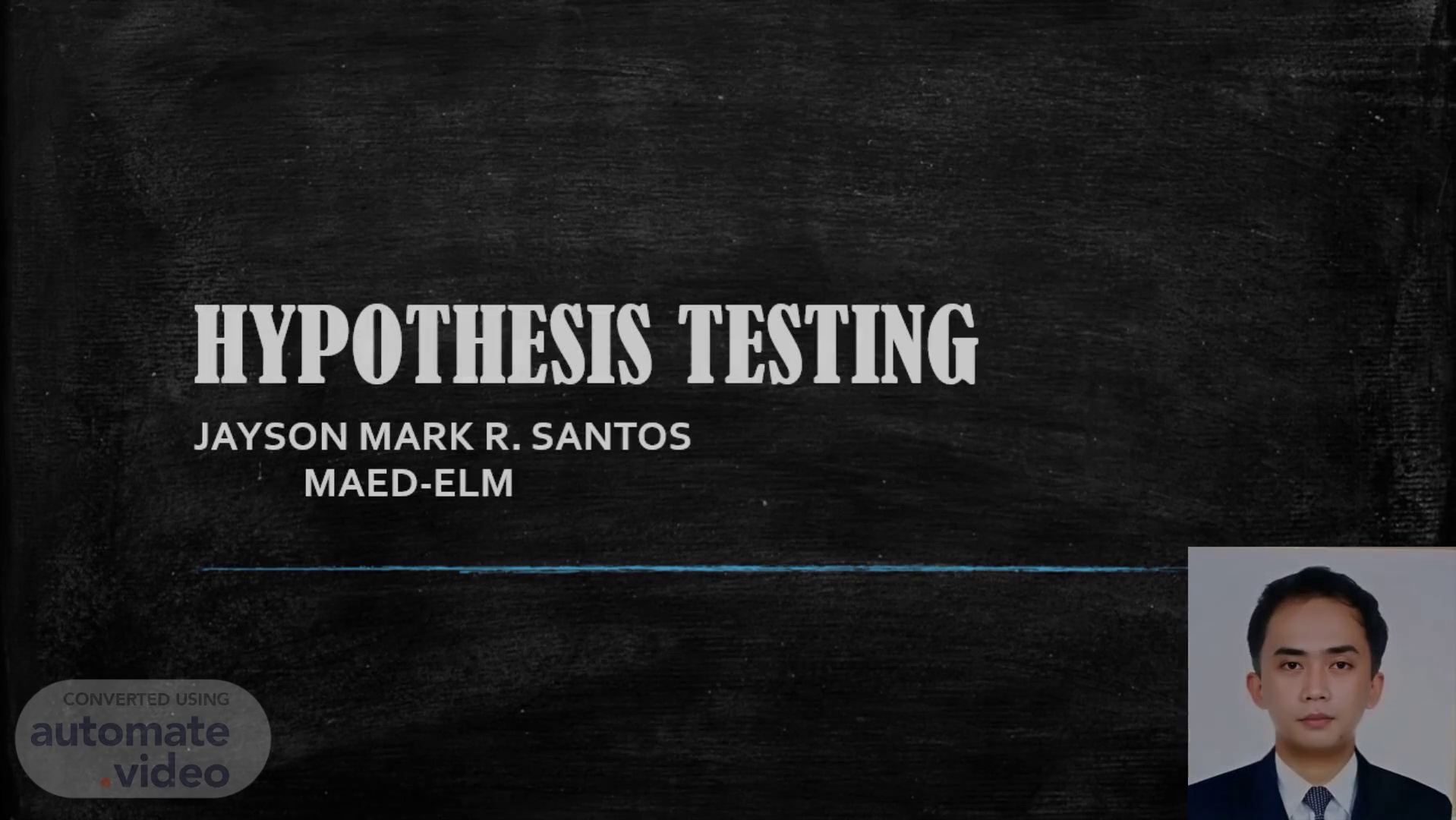Scene 1 (0s)
HYPOTHESIS TESTING. JAYSON MARK R. SANTOS MAED-ELM.
Scene 2 (27s)
[Audio] The superintendent of a school division is considering implementing a new teacher mentoring program to improve teacher performance scores. A study was conducted involving 100 newly hired teachers, with half receiving mentorship and the other half not. After comparing their performance scores at the end of the academic year, the results showed a statistically significant difference between the two groups, with the mentored group performing better. This indicates that the mentoring program had a positive impact on teacher performance..
Scene 3 (1m 0s)
[Audio] The null hypothesis states that there is no significant difference between the mean scores of mentees who received mentorship and those who did not receive mentorship. It assumes that the treatment effect of mentorship is zero. The alternative hypothesis suggests that there is a significant difference between the two groups, implying that mentorship has a positive impact on mentees' performance. Based on the p-value, we can conclude that the null hypothesis should be rejected. This means that the observed difference between the two groups is statistically significant, indicating that mentorship does have a positive impact on mentees' performance. For educational leaders making policy decisions on mentoring programs, these findings suggest that investing in mentorship initiatives may lead to improved outcomes for mentees. Therefore, they should consider allocating resources to support mentorship programs, as they appear to be effective in promoting student success..
Scene 4 (1m 59s)
[Audio] The null hypothesis states that there is no significant difference in teacher performance scores between teachers who participated in the mentoring program and those who did not. This means that the mentoring program has no effect on teacher performance. The alternative hypothesis, on the other hand, suggests that there is a significant difference in teacher performance scores between the two groups, implying that the mentoring program does have an impact on teacher performance. We hope to find evidence supporting this claim. If our data shows a statistically significant difference, we will reject the null hypothesis in favor of the alternative..
Scene 5 (2m 37s)
[Audio] The data analysis showed a p-value of 0.03, indicating a significant difference in teacher performance scores between the treatment and control groups. This means the likelihood of obtaining this result by chance is less than 5%. Therefore, the null hypothesis must be rejected. The results suggest that the mentoring program had a positive impact on teacher performance, supporting its effectiveness. These findings should be considered when making policy decisions about mentoring programs, as they have the potential to improve teacher quality and student outcomes..
Scene 6 (3m 13s)
[Audio] The findings of this study have significant implications for educational leaders making policy decisions on mentoring programs. Firstly, they provide evidence-based justification for investing in mentoring programs, particularly for newly hired teachers who may require additional support to adapt to the demands of the classroom. Implementing such programs can lead to improved teaching quality, which may ultimately enhance student learning outcomes. Secondly, mentoring can promote professional growth, job satisfaction, and teacher retention---all crucial issues in education. For policymakers and school administrators, these findings suggest that mentoring should not be seen as optional, but rather as an essential component of teacher induction and development. Leadership teams may also consider establishing structured mentoring frameworks, allocating funds for mentor training, and regularly evaluating the program's impact to ensure its effectiveness..
Scene 7 (4m 14s)
[Audio] The importance of hypothesis testing cannot be overstated. It ensures that our decisions are grounded in fact rather than assumption. By identifying genuine effects and minimizing bias, it enables us to create policies and programs that genuinely work. Furthermore, it fosters ongoing improvement, permitting us to fine-tune our practices and become more data-driven and responsible. As educators, it is vital that we prioritize hypothesis testing in our daily work, ensuring that our actions are driven by evidence rather than speculation..
Scene 8 (4m 51s)
[Audio] The null hypothesis states that there is no significant difference in teacher performance scores between teachers who participated in the mentoring program and those who did not. On the other hand, the alternative hypothesis proposes that there is a significant difference in teacher performance scores between teachers who participated in the mentoring program and those who did not. With a p-value of 0.03, the null hypothesis can be rejected, indicating that there is a statistically significant difference in teacher performance scores between the two groups. This suggests that the mentoring program had a positive impact on the performance of newly hired teachers..
